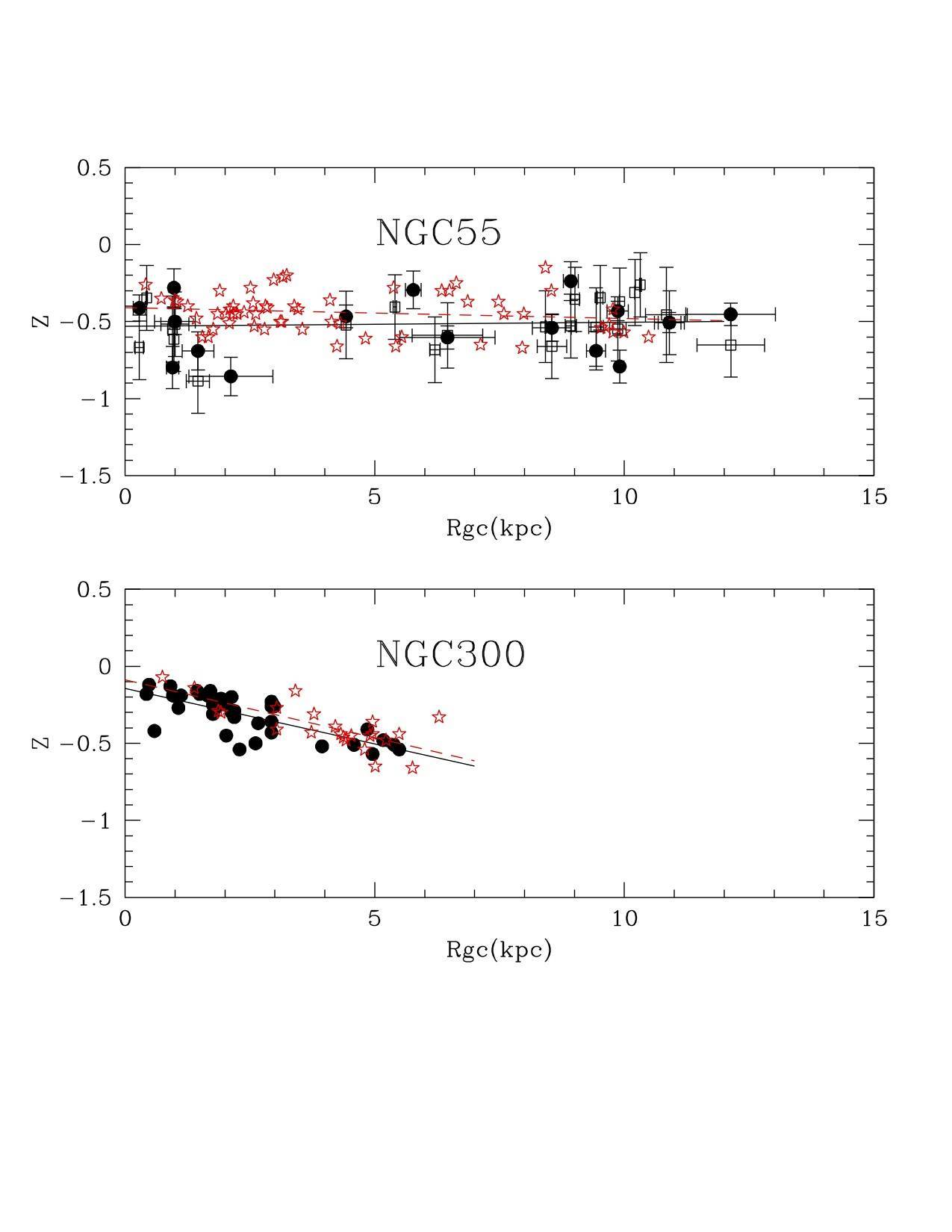Spiral galaxies are complex astrophysical objects that usually manifest a non-uniform distribution of metals across their discs. Their radial metallicity distribution, known as the radial metallicity gradient, has been studied for a long time, starting with the pioneering works by Aller (1942).
The radial metallicity gradients are usually negative and they are recognized as a signature of the inside-out formation of the disc, with the inner regions formed at early epochs and the outer ones still forming stars and enhancing their metallicity.

Figure 1: This image of the nearby galaxy NGC55 was taken with the National Science Foundation's 0.9-meter telescope at Cerro Tololo Interamerican Observatory in Chile. Credit T.A.Rector/NOAO/AURA/NSF
In this framework, a group of researchers led Laura Magrini (INAF, Osservatorio di Arcetri) has obtained GMOS GEMINI optical spectra of a large sample of HII regions in a nearby edge-on galaxy, NGC~55 shown in Figure 1 (Magrini et al. 2016). The studied HII regions are located from the central regions up to 11-12~kpc. The surprising result is that those regions, despite their different location in the disc, present an extremely homogeneous composition, with essentially flat distributions of abundances. This is in nice agreement with what has been recently found for different populations, e.g., supergiant stars (Kudritzki et al. 2016).

Figure 2: Upper panel: NGC 55 HII regions (O/H derived with the electron temperature Te method –filled circles– and from the strong-line method –empty squares) and supergiants from Kudritzki et al. (2016) (empty stars) radial distribution.
The continuous line is the fit to the HII regions with Te determinations, whereas the dotted line is the
fit to the whole sample of supergiant abundances. Lower panel: NGC 300 HII regions (Bresolin et al. 2009; Stasinska et al. 2013, filled circles from) and supergiants from Kudritzki et al. (2008)(empty stars) radial distribution.
So, the questions are: how can the composition of HII regions and supergiants be so homogeneous in a large spiral galaxy? Why is not there a clear metallicity gradient as in most spiral galaxies?
A systematic study of gradients in late-type spiral and irregular galaxies has shown that there is a strong correlation between the radial abundance gradient of galaxies and their surface brightness profiles. In particular, galaxies with a steep inner surface brightness profile usually present a noticeable radial abundance gradient. On the other hand, those galaxies with flat inner surface brightness profiles have shallower or null gradients.
The reason of these different behaviours might be related to the presence of radial mixing of gas (through radial flows or galactic fountains), which takes place more evidently in galaxies with a flat surface density inner profile that can readily redistribute the gas across the disc. The comparison of metallicity distributions and surface density profiles in the galaxy pair, NGC~55 and NGC~300 has allowed to investigate this hypothesis in detail.
The two companion galaxies have indeed similar mass and morphology, but they have different K-band radial surface profiles and radial metallicity gradients (see Figure 2). This is a signature of a different mass accretion/gas outflow, with a consequent much higher re-distribution of metals in NGC~55 with respect to NGC~300.
The chemical evolution of NGC~55 is likely characterised by large amounts of gas outflow and infall, having one of the largest known infall rate in the Local Universe.



